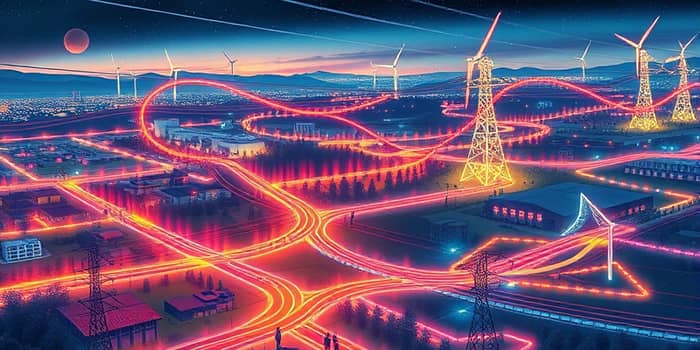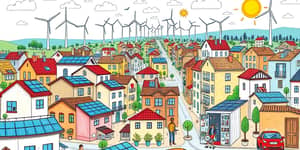The concept of a modern electricity network with advanced intelligence is no longer a distant vision but an unfolding reality. As societies strive to meet rising energy demands while reducing carbon footprints, the smart grid emerges as a beacon of innovation. By blending digital technology, real-time data, and automation, this new paradigm promises to reshape how power is generated, delivered, and consumed across the globe.
At its core, a smart grid transforms the traditional distribution system into a dynamic, responsive platform. It harnesses powerful sensors, communication protocols, and analytics to ensure reliability, sustainability, and affordability. More than a mere upgrade, it represents a fundamental shift in the relationship between utilities, consumers, and the environment.
Understanding the Smart Grid Revolution
The term “smart grid” refers to an electricity network that employs cutting-edge technologies and digital intelligence to monitor and manage the flow of power in real time. Unlike legacy systems that rely on one-way delivery and manual oversight, a smart grid integrates two-way communication between utilities and consumers to optimize performance and anticipate challenges before they escalate into outages or waste.
Historically, grids were designed for predictable, centralized power plants feeding passive end users. With the proliferation of renewable energy, distributed generation, and electric vehicles, this model struggled to adapt. The smart grid addresses these limitations by introducing distributed energy resources and renewable integration, allowing solar panels, wind turbines, and battery storage to plug in seamlessly alongside traditional generators.
Core Components and Technologies
Building a smart grid requires a mosaic of interconnected devices, platforms, and protocols. Each element plays a crucial role in ensuring the system’s agility and resilience. Below are some of the key components:
- Smart meters and phasor measurement units installed at homes and substations
- High-speed sensors and communication networks for grid-wide diagnostics
- Automated substations equipped with intelligent relays and fault detection
- Advanced control centers with real-time data analytics and dispatch capabilities
- Integration platforms for rooftop solar, wind farms, batteries, and electric vehicles
These components are bound together by a robust communication infrastructure that leverages fiber optics, wireless networks, and specialized protocols. By capturing real-time data collection and automated controls, operators can balance supply and demand dynamically, maintain voltage and frequency stability, and deploy resources where they are needed most.
Key Benefits for Society and the Planet
Smart grids deliver transformative advantages that extend from individual households to global environmental goals. Their deployment drives innovation, economic growth, and better quality of life. Among the most impactful benefits are:
- Self-healing capabilities for improved resilience in the face of storms or cyber threats
- Demand response programs and dynamic pricing that empower consumers to save money
- Enhanced monitoring and dynamic adjustment of energy flows to reduce losses
- Consumer empowerment through detailed usage insights and efficiency tools
- Carbon emission reduction via optimized renewable integration
By minimizing downtime and enabling proactive maintenance, these systems ensure a steady and reliable supply of electricity. Consumers gain access to real-time usage data and incentives, encouraging energy-conscious behavior. Collectively, these improvements translate into lower bills, reduced greenhouse gases, and greater energy security for communities everywhere.
Challenges and Considerations
While the promise of smart grids is immense, realizing their full potential demands careful planning and investment. A primary concern is cybersecurity: with thousands of connected devices transmitting sensitive data, robust cybersecurity measures and interoperability standards must be implemented to shield infrastructure from malicious attacks and ensure privacy protections for consumers.
Another barrier is the substantial capital expenditure required to upgrade aging infrastructure. Utilities must weigh short-term investment against long-term savings and societal benefits. Furthermore, regulatory frameworks need to evolve, crafting policies that incentivize innovation, maintain fairness in energy markets, and guide the integration of decentralized resources without compromising system stability.
Looking Ahead: The Road Forward
Global momentum behind smart grid adoption continues to accelerate, driven by climate commitments, technological breakthroughs, and shifting consumer expectations. Emerging trends include the expansion of electric vehicles as both loads and distributed storage assets, and the proliferation of microgrids that empower communities to achieve energy independence and resilience.
Artificial intelligence and machine learning offer another frontier, enabling predictive maintenance powered by artificial intelligence to forecast equipment failures and optimize asset performance. Blockchain and peer-to-peer trading platforms promise to redefine how energy transactions occur, fostering a decentralized marketplace where households can sell excess solar power directly to neighbors.
In this evolving landscape, collaboration between policymakers, utilities, technology providers, and end users will be vital. By aligning goals and sharing data, stakeholders can unlock synergies that drive down costs, spur innovation, and accelerate the global energy transition.
As we stand at the cusp of this new era, the smart grid represents more than just an engineering achievement; it embodies our collective aspiration for a cleaner, more equitable future. Every smart meter installed, every sensor deployed, and every algorithm refined contributes to a tapestry of progress that benefits us all.
Now is the time to embrace this revolution. Whether you are a homeowner considering solar panels, a business exploring demand response, or a policymaker shaping energy strategy, take part in the smart grid journey. Your engagement and advocacy will help ensure that reliable, sustainable power becomes accessible to every corner of the planet, illuminating a path toward a brighter tomorrow.
References
- https://www.iea.org/energy-system/electricity/smart-grids
- https://sympower.net/articles/smart-grid-explained
- https://en.wikipedia.org/wiki/Smart_grid
- https://www.energy.gov/oe/grid-modernization-and-smart-grid
- https://greenly.earth/en-us/blog/industries/smart-grid-all-you-need-to-know
- https://waltero.com/resources/benefits-of-smart-grid/
- https://engineeringonline.ucr.edu/blog/the-future-of-smart-grid-technologies/
- https://e.huawei.com/at/knowledge/2024/industries/grid/what-is-smart-grid










